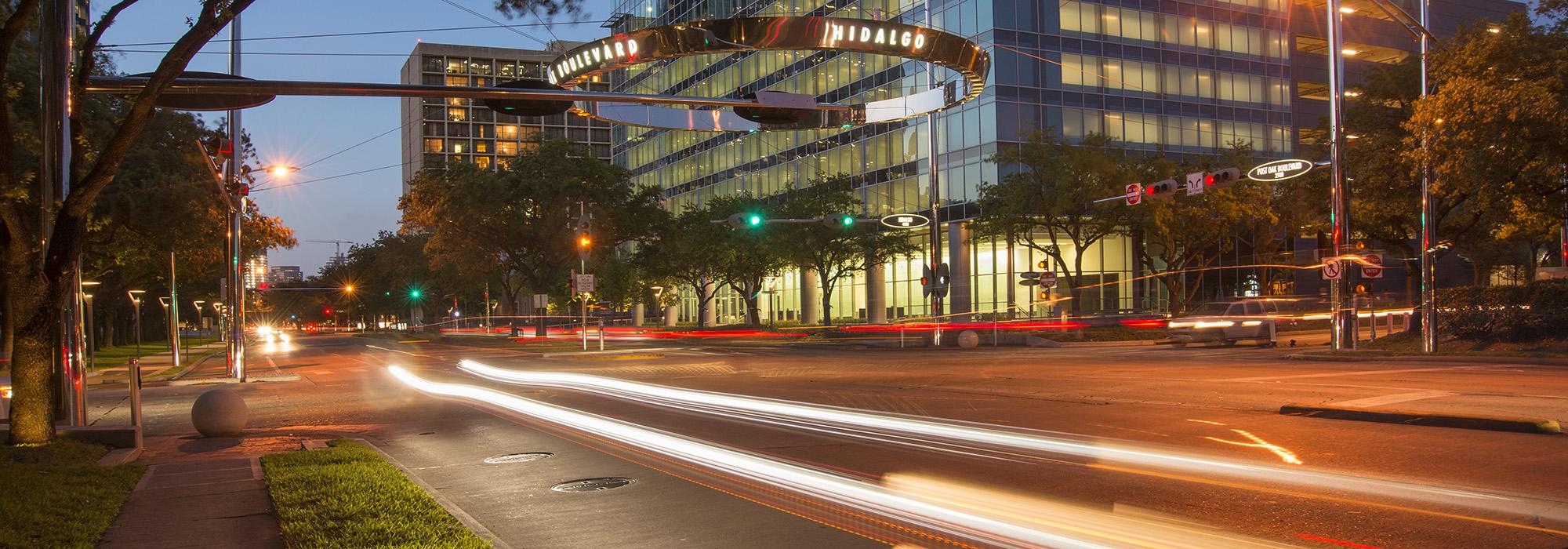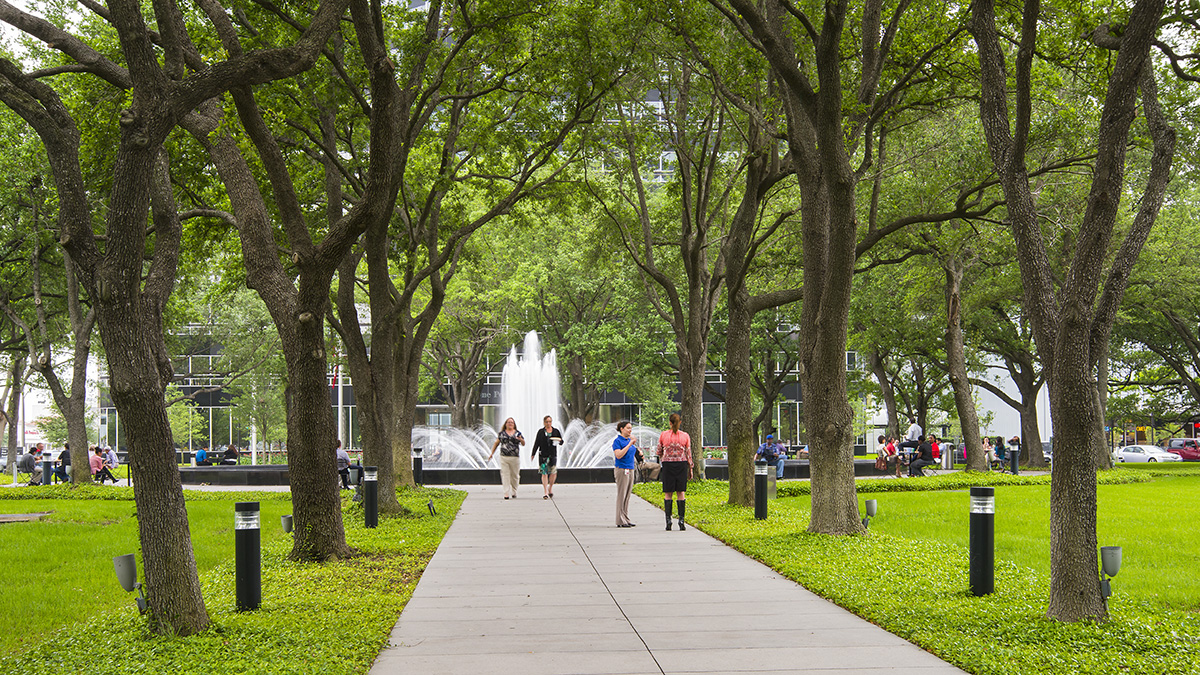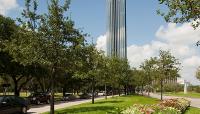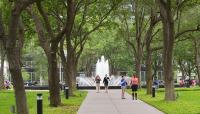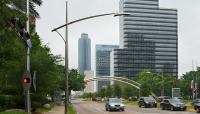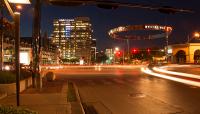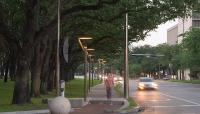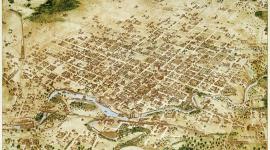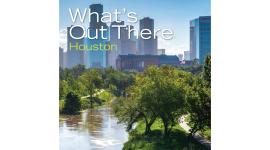Stretching two miles through the Uptown district west of downtown, this north-south boulevard is flanked on both sides by upscale mixed-use development. By the 1940s and 1950s, suburbs such as Afton Oaks and Tanglewood were beginning to extend Houston’s cityscape into the surrounding farmland. Post Oak Boulevard was, at that time, a two-lane asphalt road paralleled by drainage ditches and passing through open prairie and farms. In the 1960s, developer Gerald Hines began to develop a commercial center on remnant farmland lying on both sides of the boulevard. In 1970, his 600,000-square-foot Galleria shopping mall opened at the corner of Post Oak Boulevard and Westheimer Road. By 1983, the area had experienced such growth that three 24-story buildings on a seventeen-acre site, a 64-story office tower, and the 64-foot-tall Waterwall sculptural fountain (all designed by Philip Johnson) did not seem out of place. Post Oak Boulevard was a wide, six-lane artery with a grassy median but without trees or sidewalks.
In 1987, the Uptown Houston District was formed by the Texas Legislature to manage and improve economic and infrastructural development of the 500-acre area that encompasses Post Oak Boulevard. By the mid-1990s, with bond funding, the boulevard’s streetscape, designed by SWA Group, had been improved with oak and flowerbed plantings, the installation of sidewalks and custom lighting, and the burying of utility lines. Massive stainless steel arches and rings designed by Communications Arts (now Stantec) were positioned at intersections while public art and pocket parks were added to create a pedestrian-friendly environment. In 2013, Design Workshop was commissioned to create a master plan that addresses transit and pedestrian concerns along Post Oak Boulevard.



